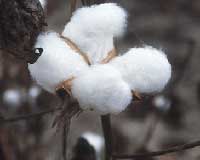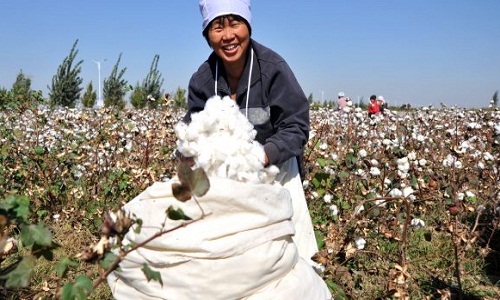"Improving global economy and stronger growth forecast for coming years will have a positive impact on cotton production globally. World cotton demand is increasing with current estimates calling for an increase of approx five per cent in 2017, which is more than double the previous five-year average. China will begin the next round of reserve auctions next month. A successful auction series in 2018 could easily position China to become a larger cotton importer again."

Improving global economy and stronger growth forecast for coming years will have a positive impact on cotton production globally. World cotton demand is increasing with current estimates calling for an increase of approx five per cent in 2017, which is more than double the previous five-year average. China will begin the next round of reserve auctions next month. A successful auction series in 2018 could easily position China to become a larger cotton importer again. Jody Campiche, VP, economics & policy analysis, National Cotton Council (NCC), says world mill use is expected to exceed world production in the 2018 marketing year, and global cotton stocks are projected to decline by 5.4 million bales in the 2018 balance sheet. In NCC’s annual Economic Outlook, she noted global stocks decline is due to reduced inventories in China. China’s stocks are declining with USDA estimating a drop of 8.0 million bales in 2017. In 2018, there is a possibility of an additional 10.0 million bale reduction in total stocks.

According to Campiche, global production is projected at 119.3 million bales in 2018. World mill use is projected to increase around three per cent in 2018 to 124.8 million bales with most of the growth from China, Vietnam and Bangladesh. While projections of global consumption exceeding production normally would be supportive of prices, the implications for the coming year may not be as clear cut as stocks outside China are projected to increase by 8.6 million bales in 2017 and 4.6 million bales in 2018.
Regarding domestic cotton mill use, Campiche said 2017 US mill use is estimated at 3.4 million bales, up 100,000 bales from 2016. The Economic Adjustment Assistance Program continues to be an important source of stability allowing mills to invest in new facilities and equipment. For 2018, the NCC is projecting a modest increase in US mill use of 60,000 bales. She noted that export markets continue to be US raw fiber’s primary outlet. The US will remain the largest cotton exporter with a market share of 39 per cent in 2017 as compared to 40 per cent in 2016. China is currently the top export market for the 2017 crop year, followed by Vietnam and Pakistan. World trade is projected to be higher in the 2017 marketing year, but increased competition from other major exporting countries has led to a decline in the US market share.
Trends Forecast
Looking ahead to 2018, increased competition from other cotton-producing countries is expected to reduce both US exports and US market share. With exports pegged at 14.3 million bales, Campiche projects total US offtake of 17.7 million bales in 2018, leading to an increase in ending stocks of 1.5 million bales. In China, cotton mill use has increased, but competition from lower-priced man-made fibre remains a limiting factor for the continued growth of cotton fibre use. Although internal cotton prices are still strong relative to polyester prices, polyester prices increased in 2017 and are currently at the highest level since 2014. China’s new environmentally-friendly policies could also affect man-made fibre production and use.
Although cotton prices have improved slightly compared to other crops, cottonseed prices have dropped significantly, thus leading to an increase in net ginning costs. Many producers will continue to face difficult economic conditions in 2018. Production costs remain high, and unless producers have good yields, current prices may not be enough to cover all production expenses.












